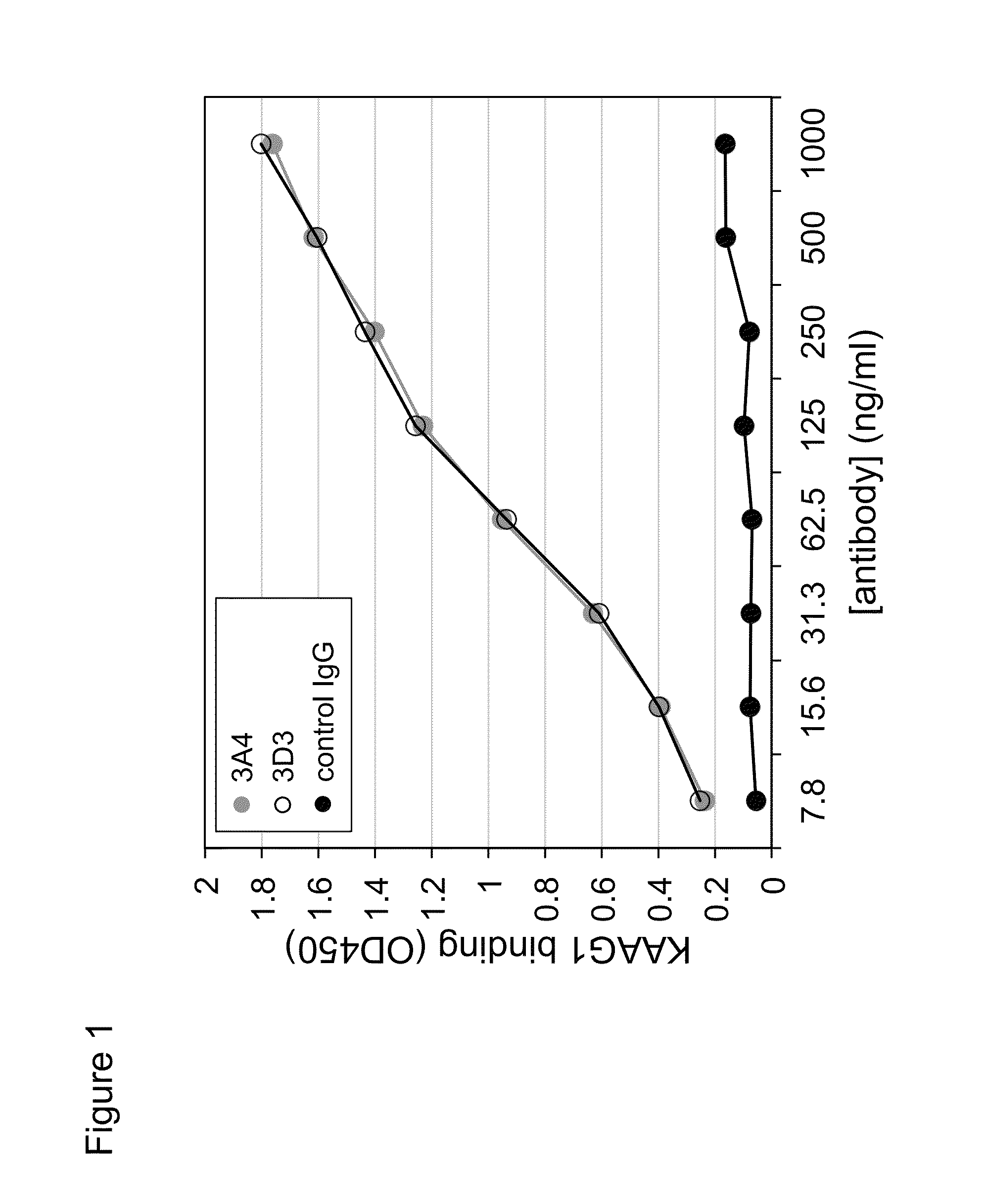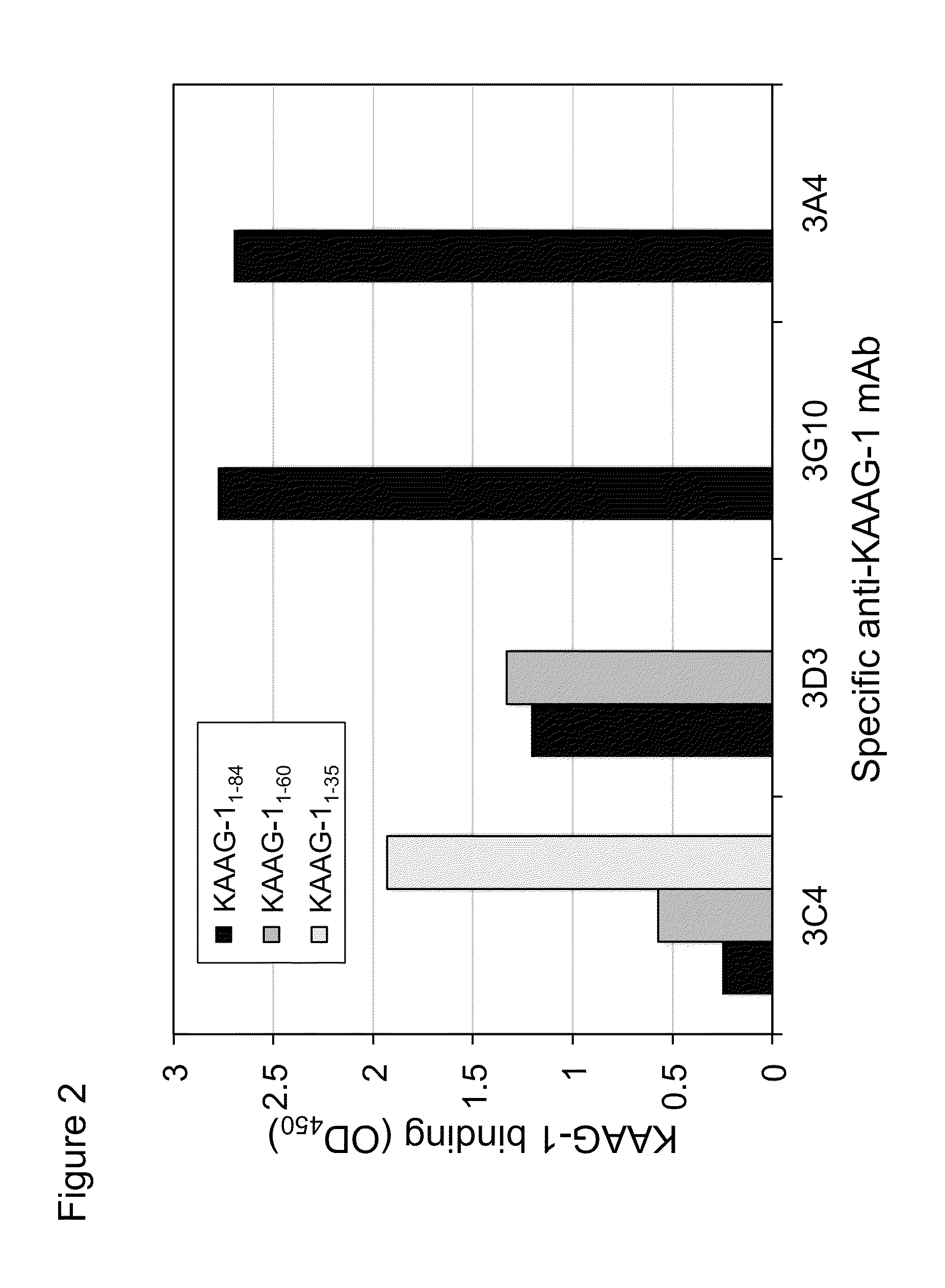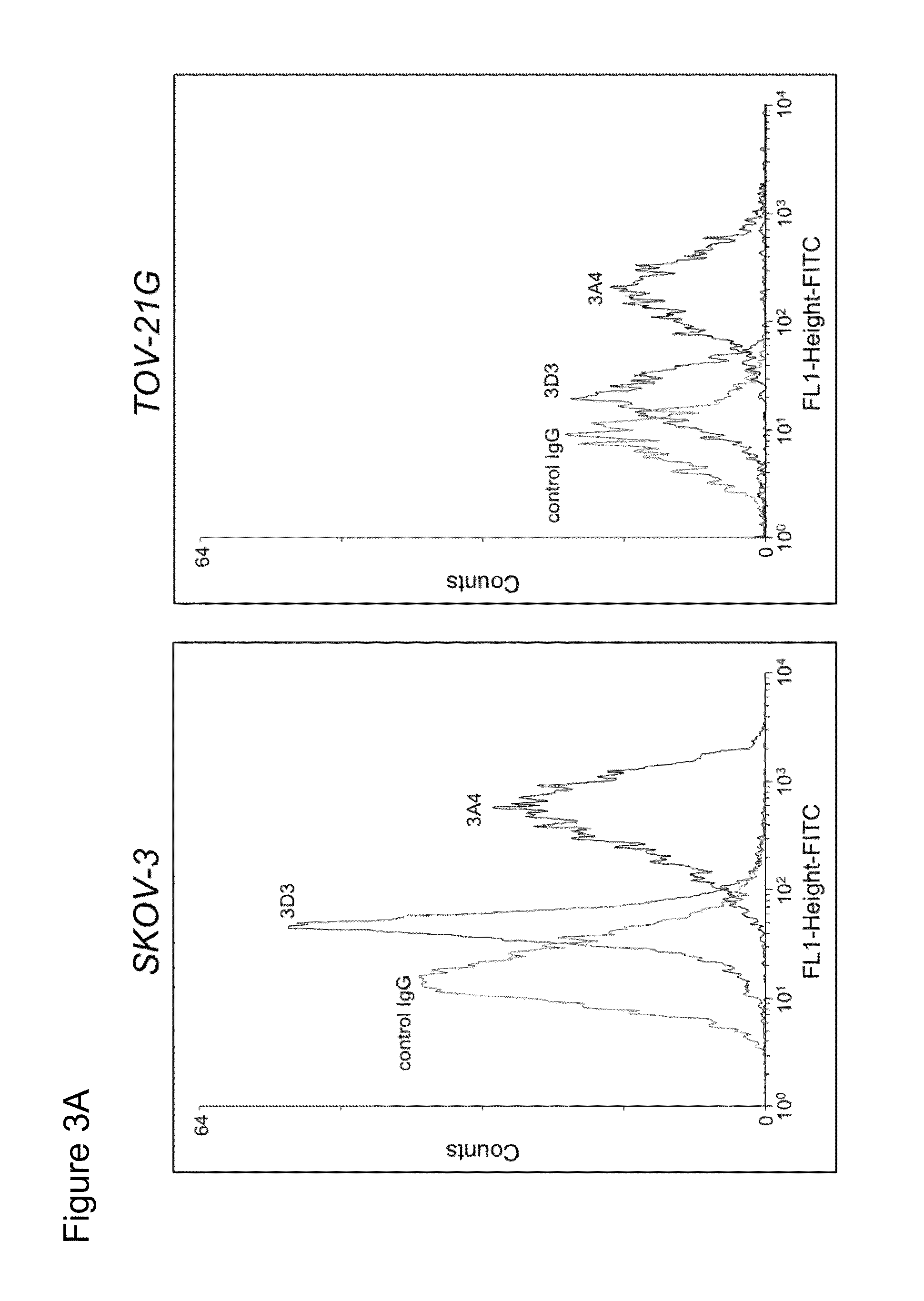Antibodies against kidney associated antigen 1 and antigen binding fragments thereof
an antigen and antigen technology, applied in the field of antibodies or antigen binding fragments, can solve the problems of high mortality rate, limited clinical application of early stage disease tests, and high cost and availability of strategies, so as to improve binding and internalization, improve the ability to bind, and reduce the affinity
- Summary
- Abstract
- Description
- Claims
- Application Information
AI Technical Summary
Benefits of technology
Problems solved by technology
Method used
Image
Examples
example 1
This Example Describes the Binding of Antibody 3A4 to KAAG1
[0323]The antibodies that bind KAAG1 were generated using the Alere phage display technology. A detailed description of the technology and the methods for generating these antibodies can be found in the U.S. Pat. No. 6,057,098. In addition, a detailed description of the generation of antibodies against KAAG1 can be found in PCT / CA2009 / 001586. Briefly, the technology utilizes stringent panning of phage libraries that display the antigen binding fragments (Fabs). After a several rounds of panning, a library, termed the Omniclonal, was obtained that was enriched for recombinant Fabs containing light and heavy chain variable regions that bound to KAAG1 with very high affinity and specificity. From this library, more precisely designated Omniclonal AL0003 A2ZB, 96 individual recombinant monoclonal Fabs were prepared from E. coli and tested for KAAG1 binding. The monoclonal designated 3A4 was derived from this 96-well plate of mon...
example 2
This Example Describes the Epitope Mapping Studies to Determine which Region of KAAG1 the 3A4 Antibody Binds to
[0329]To further delineate the regions of KAAG1 that are bound by the 3A4 antibody, truncated mutants of KAAG1 were expressed and used in the ELISA. As for the full length KAAG1, the truncated versions were amplified by PCR and ligated into BamHI / HindIII digested pYD5. The primers that were used combined the forward oligonucleotide with the sequence shown in SEQ ID NO.:25 with primers of SEQ ID NOS:26 and 27, to produce Fc-fused fragments that ended at amino acid number 60 and 35 of KAAG1, respectively. The expression of these recombinant mutants was conducted as was described above for the full length Fc-KAAG1 and purified with Protein-A agarose.
[0330]Based on the teachings of Tremblay and Filion (2009), it was known that other antibodies interacted with specific regions of recombinant KAAG1. Thus, anti-KAAG1 antibody 3C4, 3D3, and 3G10 interacted with the regions 1-35, 36...
example 3
This Example Describes the Ability of 3A4 to Bind to KAAG1 on the Surface of Cancer Cell Lines
[0331]Flow cytometry was used to detect KAAG1 on the surface of cell lines. Based on RT-PCR expression analyses using KAAG1 mRNA specific primers, selected cancer cell lines were expected to express KAAG1 protein. To verify this, ovarian cancer cells (SKOV-3 and TOV-21G) and a control cell lines that showed very little KAAG1 expression (293E). The cells were harvested using 5 mM EDTA, counted with a hemocytometer, and resuspended in FCM buffer (0.5% BSA, 10 μg / ml goat serum in 1×PBS) at a cell density of 2×106 cells / ml. Chimeric 3A4 or a control IgG were added to 100 μl of cells at a final concentration of 5 μg / ml and incubated on ice for 2 h. The cells were washed in cold PBS to remove unbound antibodies, resuspended in 100 μl FCM buffer containing anti-human IgG conjugated to FITC (diluted 1:200) as a secondary antibody and incubated on ice for 45 min on ice. Following another washing ste...
PUM
 Login to View More
Login to View More Abstract
Description
Claims
Application Information
 Login to View More
Login to View More - R&D
- Intellectual Property
- Life Sciences
- Materials
- Tech Scout
- Unparalleled Data Quality
- Higher Quality Content
- 60% Fewer Hallucinations
Browse by: Latest US Patents, China's latest patents, Technical Efficacy Thesaurus, Application Domain, Technology Topic, Popular Technical Reports.
© 2025 PatSnap. All rights reserved.Legal|Privacy policy|Modern Slavery Act Transparency Statement|Sitemap|About US| Contact US: help@patsnap.com



